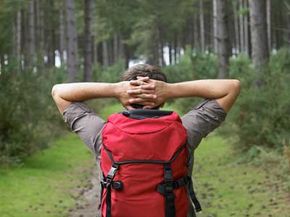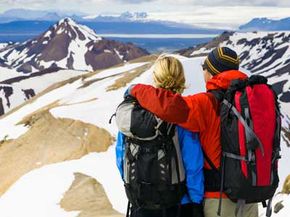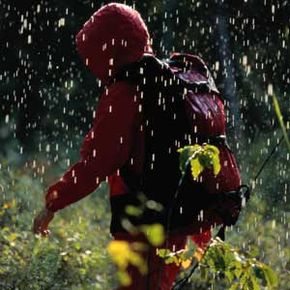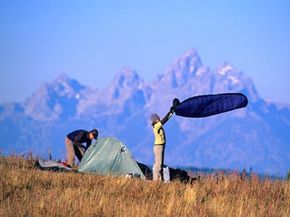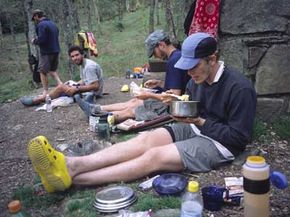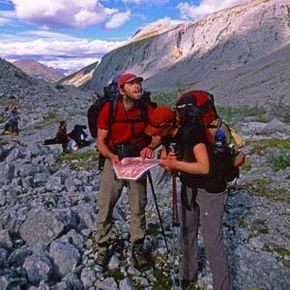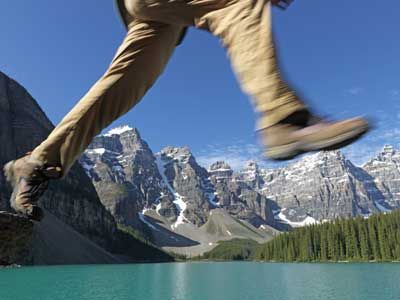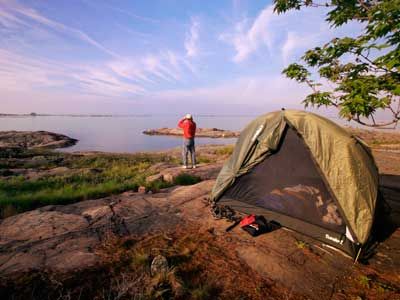Nothing humbles quite like the weight of your own possessions at the bottom of a steep trail. You pause to look up its winding path. Your thighs ache. Your lower back throbs. Accountability sets in. You've no one to blame but yourself for the four extra cans of beans and third pair of shoes you stashed in your pack at the last minute. As you climb the hill, you discover what your body can use -- physical fitness -- and what it can do without -- extraneous footwear -- when it's deep into the woods.
Backpacking is a terrific challenge. Not only do you immerse yourself in nature and its gorgeous backcountry scenes, but you get excellent exercise. If you thoughtfully prepare for your journey -- packing practically and preparing your body for the trails -- you'll reap the outdoors reward you desire.
Advertisement
No matter how long your trip, you'll want to pack certain essentials -- map, food, change of clothes, rain gear, hat, sunscreen, sunglasses, firestarter or matches, knife or multi-tool, flashlight or headlamp, batteries, and a first aid kit. Pack as if a sudden downpour is likely, even if the weatherman says it's not. And although your backpack advertises that it's waterproof, separate your gear into stuff sacks and waterproof bags from the camping supply store, or heavy duty plastic bags that zip shut, to keep your things dry.
Pack your backpack smart. Separate your gear into bags logically -- for example, pack toiletries together and place then near the bottom of the pack since you won't use them on the trail. If you're worried it's going to rain, pack your tent near the top of the pack in case you need to get it out quickly to take cover. Put your first aid kit in a designated spot so that it's easy to access at all times.
But before you ever pack, you'll need to prepare your body's physical fitness for the feat. Learn more on the next page.
Advertisement
